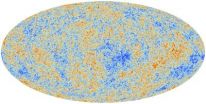(Press-News.org) JUPITER, FL – March 21, 2013 – Researchers at The Scripps Research Institute (TSRI) in Jupiter, FL, have developed cutting-edge technology that can successfully screen human blood for disease markers. This tool may hold the key to better diagnosing and understanding today's most pressing and puzzling health conditions, including autoimmune diseases.
"This study validates that the 'antigen surrogate' technology will indeed be a powerful tool for diagnostics," said Thomas Kodadek, PhD, a professor in the Departments of Chemistry and Cancer Biology and vice chairman of the Department of Chemistry at TSRI, whose group developed the technology.
The latest study, published in the journal Chemistry & Biology on March 21, 2013, shows how the technology accurately identified human blood markers for neuromyelitis optica (NMO), a rare autoimmune disorder resembling multiple sclerosis that can result in blindness and paralysis. Following a similar study on mouse models for multiple sclerosis two years ago, the work confirms that the technique can also be successfully applied to humans.
Finding the Needle in a Haystack
The blood is filled with molecules called "antibodies" released by the immune system to defend the body against disease. Many autoimmune diseases produce antibodies specific to that disease. Identifying these disease-specific antibodies among the millions of other similar yet non-disease-specific antibodies in the blood, however, is much like finding a needle in a haystack.
Many current diagnostic methods detect disease-specific antibodies by using part of the virus, bacteria or cellular component targeted by the antibody in a patient's body, essentially "fishing" for the antibody using its distinct target as bait. Unfortunately, many disease-specific antibodies and their targets are currently unidentified.
Kodadek and his colleagues have found a way to sidestep this conundrum by substituting these unknown antibody-binding targets with biologically unnatural molecules called "peptoids." Peptoids are chain-like molecules tethered to tiny beads and extended "link by link" by the sequential addition of small chemical subunits. By using different subunits and randomizing their order, chemists can produce libraries of thousands and even millions of different peptoids quickly and easily.
These vast libraries are screened for peptoid "hits" that bind exclusively to antibodies found only in patients known to have a specific disease. "We find disease biomarkers differently [than anyone else]," explained Kodadek. "This enables new disease biomarker detection." Additionally, by using these peptoid hits to "fish" for disease-specific antibodies, the system enables disease-specific antibody detection without first knowing the antibodies' natural binding targets.
A Diagnostic Revolution
Using this technology, the group identified several peptoids that bound exclusively to antibodies in NMO patient blood serum and not healthy patients or patients with similar diseases, including multiple sclerosis, lupus, Alzheimer's disease and narcolepsy. At least one of the peptoids bound to an antibody that is well known to be associated with NMO.
The study builds on technology that the group successfully used to identify disease markers in mouse models for multiple sclerosis, introduced in a January 2011 publication in the journal Cell. "[Our latest study] is proof positive that our technology works in complex human systems as well," explained Kodadek.
Kodadek noted the new study also introduced a technical advance that increases the technology's utility, significantly improving the peptoid library screening process. This step initially involved the time-consuming and painstakingly tedious task of removing peptoids from beads and refixating them to a different solid support, called a microarray.
"This is the first time we screened peptoid libraries directly on the beads [on which they were made] instead of using microarrays," said Bindu Raveendra, PhD, staff scientist who was a first author of the study with postdoctoral researcher Wu Hao. "Previously, we could screen thousands of peptoids at a time; now, we can now screen millions. That just wasn't feasible using microarrays."
INFORMATION:
In addition to Raveendra, Hao and Kodadek, authors of the paper "Discovery Of Peptoid Ligands For Anti-Aquaporin 4 Antibodies" are Roberto Baccala and Argyrios N. Theofilopoulos of the TSRI Immunology & Microbial Science Department, M. Muralidhar Reddy and Jessica Schilke of Opko Health and Jeffrey L. Bennett of the University of Colorado School of Medicine Neurology and Ophthalmology Department.
The study was funded by a contract from the National Heart, Lung, and Blood Institute for the Stanford Proteomics Center (N01-HV-00242) and grants from the Guthy-Jackson Charitable Foundation and the National Multiple Sclerosis Society (RG4320).
Scripps Research study underlines potential of new technology to diagnose disease
The novel method points to new blood tests for conditions from Alzheimer's to autoimmune diseases
2013-03-21
ELSE PRESS RELEASES FROM THIS DATE:
BUSM researchers identify chemical compounds that halt virus replication
2013-03-21
(Boston) – Researchers at Boston University School of Medicine (BUSM) have identified a new chemical class of compounds that have the potential to block genetically diverse viruses from replicating. The findings, published in Chemistry & Biology, could allow for the development of broad-spectrum antiviral medications to treat a number of viruses, including the highly pathogenic Ebola and Marburg viruses.
Claire Marie Filone, PhD, postdoctoral researcher at BUSM and the United States Army Medical Research Institute of Infectious Diseases (USAMRIID), is the paper's first ...
ACMG releases report on incidental findings in clinical exome and genome sequencing
2013-03-21
The American College of Medical Genetics and Genomics (ACMG) released the widely-anticipated "ACMG Recommendations for Reporting of Incidental Findings in Clinical Exome and Genome Sequencing" report at its 2013 Annual Clinical Genetics Meeting today in Phoenix. The ACMG Annual Clinical Genetics Meeting is one of the largest gatherings of medical and health professionals in genetics in the world.
As exome and genome sequencing become more commonly used in medical care, doctors will increasingly be able to learn about genetic changes that increase an individual's risk ...
Can we treat a 'new' coronary heart disease risk factor?
2013-03-21
NEW YORK – Depressive symptoms after heart disease are associated with a markedly increased risk of death or another heart attack. However, less has been known about whether treating heart attack survivors for depressive symptoms could relieve these symptoms, be cost-effective, and ultimately, reduce medical risk? Columbia University Medical Center's Karina W. Davidson, PhD and her research team now report a patient-centered approach that answers these questions in the affirmative.
With a grant from the National Institutes of Health's National Heart, Lung, and Blood Institute ...
Exploring the link between traumatic brain injury and people who are homeless
2013-03-21
TORONTO, March 21, 2013—Homeless people and their health care providers need to know more about traumatic brain injuries to help prevent and treat such injuries, a new study has found.
Homeless people have a disproportionately higher risk for TBI compared to the general population, yet little is known about the severity of those injuries, who exactly is suffering from them and what the long-term consequences are.
"A better understanding of TBI, its presentation and characteristics in the homeless is vital in order to enable appropriate interventions, treatments, and ...
Dysfunction in cerebellar Calcium channel causes motor disorders and epilepsy
2013-03-21
A dysfunction of a certain Calcium channel, the so called P/Q-type channel, in neurons of the cerebellum is sufficient to cause different motor diseases as well as a special type of epilepsy. This is reported by the research team of Dr. Melanie Mark and Prof. Dr. Stefan Herlitze from the Ruhr-Universität Bochum. They investigated mice that lacked the ion channel of the P/Q-type in the modulatory input neurons of the cerebellum. "We expect that our results will contribute to the development of treatments for in particular children and young adults suffering from absence ...
Misregulated genes may have big autism role
2013-03-21
PROVIDENCE, R.I. [Brown University] — A new study finds that two genes individually associated with rare autism-related disorders are also jointly linked to more general forms of autism. The finding suggests a new genetic pathway to investigate in general autism research.
The genes encode the proteins NHE6 and NHE9, which are responsible for biochemical exchanges in the endosomes of cells. Mutations in the NHE6 gene are a direct cause of Christianson Syndrome, while mutations in the NHE9 gene lead to a severe form of autism with epilepsy. In the new study, a statistical ...
Planck's 'child' universe
2013-03-21
"We are very excited, we are finally seeing the concrete results of so many years of hard work". This is how the scientists of the Planck project have commented the first data resulting from the observations carried out by Planck. The mission of the ESA satellite is to observe the past of our Universe, going back in time and reaching the very first instant right after the Big Bang. The image that the Planck scientists convey today is that of a 'child' Universe, dating back to about 380,000 years after the Big Bang, when its temperature was similar to that of the most external ...
Genetic analysis calls for the protection of 2 highly endangered Portuguese fish species
2013-03-21
The two endangered fish species, Squalius aradensis and S. torgalensis, most generally belong to the Cyprinidae, or the carp family. This is the largest fish, and vertebrate family, formed of freshwater fish with a diversity of more than 2,400 species. The family also has an important economic value as a food source. More specifically, the two species studied are members of the subfamily Leuciscinae, formed of small freshwater fish commonly known as minnows. A new genetic study of the two endangered fish was recently published in the open access journal Comparative Cytogenetics.
S. ...
Genetics, age and ethnicity are risk factors in PCa, say experts
2013-03-21
"Are there genetic risk factors for PCa? Yes, and BRCA2 and HOXB13 are useful for predicting high-risk disease," said Jack Cuzick (GB) president of the International Society for Cancer Prevention (ISCaP), referring to the two genes implicated in high-risk prostate disease. Cuzick gave a report on the Consensus Statement for Prostate Cancer Prevention at the closing plenary session of the 28 Annual EAU Congress held in Milan, Italy from March 15 to 19.
"The goal should be to integrate with other protein markers in order to develop risk-adapted screening algorithms," he ...
Novel insights into the evolution of protein networks
2013-03-21
This press release is available in German.
System-wide networks of proteins are indispensable for organisms. Function and evolution of these networks are among the most fascinating research questions in biology. Bioinformatician Thomas Rattei, University of Vienna, and physicist Hernan Makse, City University New York (CUNY), have reconstructed ancestral protein networks. The results are of high interest not only for evolutionary research but also for the interpretation of genome sequence data. Recently, the researchers published their paper in the renowned journal PLOS ...
LAST 30 PRESS RELEASES:
Exploring how patients feel about AI transcription
Category ‘6’ tropical cyclone hot spots are growing
Video: Drivers struggle to multitask when using dashboard touch screens, study finds
SLU research shows surge in alcohol-related liver disease driving ‘deaths of despair’
Rising heat reshapes how microbes break down microplastics, new review finds
Roots reveal a hidden carbon pathway in maize plants
Membrane magic: FAMU-FSU researchers repurpose fuel cells membranes for new applications
UN Member States pledge to increase access to diagnosis and inhaled medicines for the 480 million people living with COPD
Combination therapy shows potential to treat pediatric brain cancer ATRT
Study links seabird nesting to shark turf wars in Hawai‘i
Legal sports betting linked to sharp increases in violent crime, study finds
Breakthrough AI from NYUAD speeds up discovery of life-supporting microbes
New Eva Mayr-Stihl Foundation funding initiative boosts research at University of Freiburg on adaptation of forests to global change
The perfect plastic? Plant-based, fully saltwater degradable, zero microplastics
Bias in data may be blocking AI’s potential to combat antibiotic resistance
Article-level metrics would provide more recognition to most researchers than journal-level metrics
Satiety’s little helper: Protein that supports appetite regulating protein identified
UF dives deep into predicting storm damage with computer models
A stormy ocean voyage yields insights on the global carbon cycle
Scientists identify first non-coding gene that controls cell size
Demonstration of altermagnetism in RuO₂ thin films -- A new magnetic material for the AI era
Penn researchers awarded $25M to conduct trial using smartphones to fight heart disease
PCORI awards funding for new patient-centered healthcare research
Exploring the origins of the universe: 145 low-noise amplifiers complete ALMA telescopes
Empress cicada wings help illuminate molecular structure
Using sound waves to detect helium
Time burden in patients with metastatic breast and ovarian cancer from clinic and home demands
Researchers discover bias in AI models that analyze pathology samples
Scientists ID potential way to prevent brain injuries from triggering Alzheimer's
MASTER 2nd Open Call: Execution period kick-off
[Press-News.org] Scripps Research study underlines potential of new technology to diagnose diseaseThe novel method points to new blood tests for conditions from Alzheimer's to autoimmune diseases




